Infantry Assault Badge, by B. H. Mayer (in silver)
CATEGORY: Version
SKU: 01.GTR.0602.102.01.000
Estimated market value:
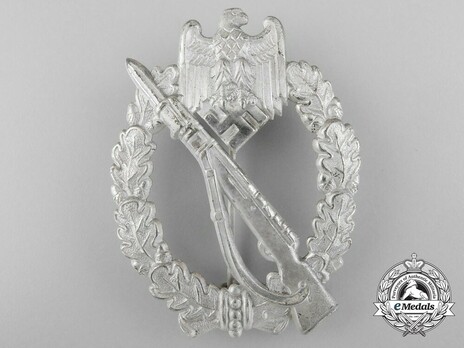
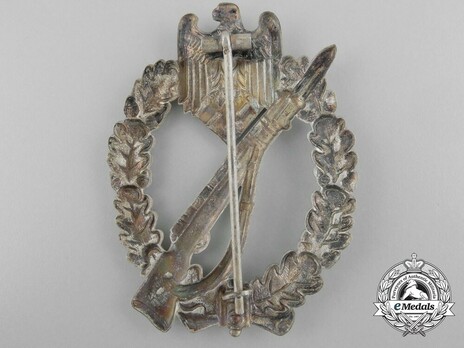
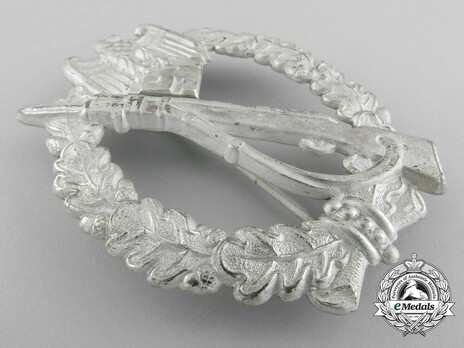
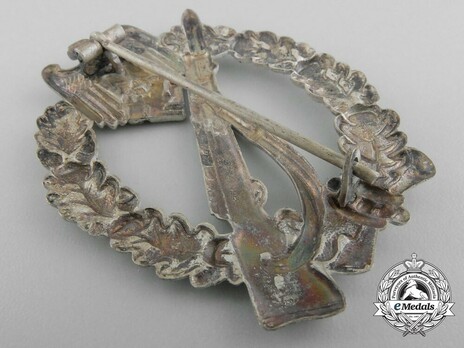
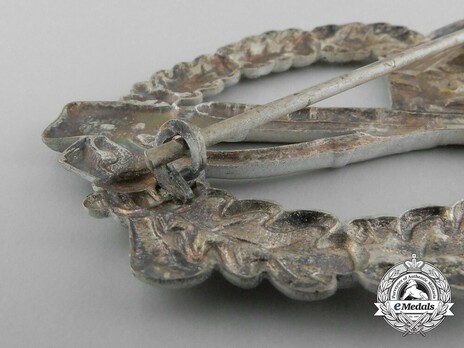
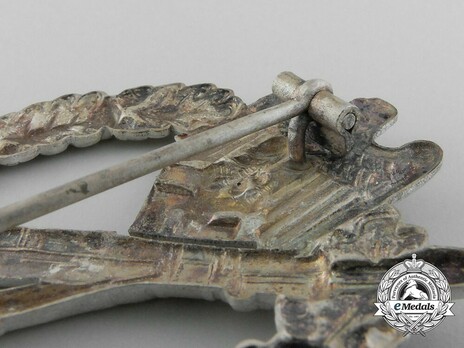
Estimated market value:
In die stamped silvered brass, hollow, the silvering is still frosted, swastika and edges are polished, without maker but typical manufactured piece from company "B.H. Mayer, Pforzheim", on round brass pin, unworn, top quality and condition.
The Infantry Assault Badge was instituted by Generaloberst von Brauchitsch on December 20, 1939, and was conferred upon infantrymen who demonstrated their bravery and merit in combat. In order to receive the award, an individual had to participate in three or more front line attacks on at least three different days. Counter attacks and reconnaissance counted as an attack.
The Silver Badge was awarded to men of infantry and mountain troop regiments. In special cases, this included ground combat units of the Luftwaffe and Kriegsmarine. Members of the Waffen-SS and police forces were also eligible if they met the prerequisites. It was first awarded in late May of 1940. The Bronze Badge was awarded to men of motorized regiments and was first awarded in early June of 1940.
The badge was originally designed by C.E. Junker in Berlin, but a variety of makers started producing these badges using dies from other makers, or by making their own dies.
The badge can be found in different variations, either hollow die-stamped, semi-hollow die-stamped, or solid die-cast/die forged. The type of hinges and catches used on the badge depend upon the manufacturer. Screwbacks with a circular corrugated patterned plate are very rare.
Some badges were maker marked, others left unmarked, and some carried the company’s LDO number, indicating production for the private retail market.
It is unknown how many Infantry Assault Badges were awarded, but estimates are as high as several million.
Since some companies used very similar designs compared to other local makers, these have been combined in the same design category. There is a large number of makers and variations, which is why not necessarily all versions for every single maker can be shown here.
The Mayer design is named after B. H. Mayer from Pforzheim. Another company that used this particular design was Frank & Reif from Stuttgart.

Comments
Sign in to comment and reply.


Scroll Top